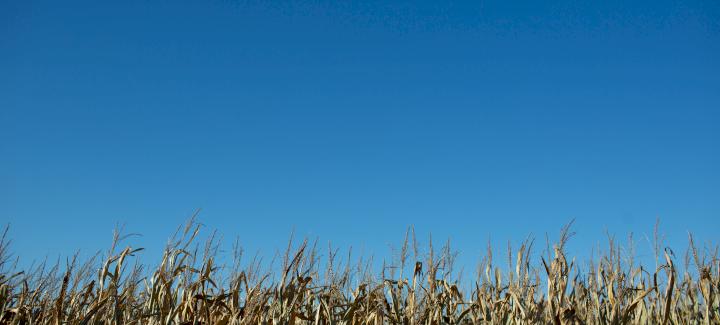The September 27 Crop Progress Report notes that 18% of corn has been harvested in the United States. Of the entire corn crop, 14% is listed in excellent condition and 45% good, 26% fair, 10% poor and 5% very poor. For growers who haven’t started corn harvest yet, now’s the time to check each field for stalk integrity and standability. Stalk quality and standability will be a concern in areas where lack of moisture and nitrogen have caused plants to cannibalize the stalks in order to finish ear development. Fields with more than 10% of the plants exhibiting stalk issues should be considered for early harvest. Here are some tips for assessing stalk quality and standability.
Walk the fields
As you do throughout the growing season, get out and scout. Don’t just check the edges of fields. Check areas where ponding or heavy moisture occurred throughout the year or dry, stressed areas. Or, if you experienced plant stress at any point throughout the growing season, check those areas to make sure stalk lodging or breakage hasn’t occurred. Stalk discoloration may be an indicator of poor stalk quality, but one of the easiest ways to check if your stalks are compromised is the old-fashioned push and pinch tests or by cutting the stalk in half.
Push and pinch test
The push and pinch tests are exactly what their name indicates. The push test is simply pushing the stalk over. I recommend doing this at a 45-degree angle. If the stalk doesn’t return to its natural upright position or if it kinks or crushes at the bottom, that’s a good indication that your stalks are compromised, and harvest should begin as soon as possible.
The pinch test is simple, but where you perform the test on the stalk is important. To execute the pinch test, use your thumb and forefinger to pinch down on the stalk roughly one foot off the ground. Next, run your fingertips up and down the stalk. If you feel your fingers touching and both sides can squeeze together, that’s a good indicator that the stalks are compromised and could lodge if not harvested soon. If the stalk is also soft and squishy to the touch, that’s a good sign that the field is ready to go.
Examine the inside of the stalk
Another common practice for examining stalk quality is to cut open the stalk, preferably in half lengthwise. Stalks should be selected at random throughout a field, and you want to look at more than one plant per section. Experts recommend randomly selecting a minimum of 100 plants per field for either of the tests. When you open the stalk, you’re looking for discoloration or rotting of the pith or areas that are hollow with hanging vascular strands.
Scout for stalk rot
When scouting for stalk quality and standability, be on high alert for symptomology of stalk rot. Stalk rots, such as anthracnose, Fusarium and Gibberella, typically occur as a result of pathogens or environmental stressors. These pathogens like to infect plants that are already weakened, and different stalk rots have different features. Gibberella, for instance, causes dark streaks on the outside of the stalks and a noticeable dark pink to red pith when the stalk is opened. Anthracnose appears as black lesions on the outside of the stalk, and Fusarium develops brown steaks on the outside of the stalk with white to light -ink discoloration inside the stalk.
Recommendations
If stalk rot is present in your fields or if you detect weakened stalks in various areas, prioritize those fields for harvest based on which field is at a greater risk for lodging. This may help you save time and yield this fall.
For next year, consider corn products with excellent disease and insect control packages and ones that respond well to stress. Work with your local Stine sales rep to determine which product will work best for your situation. Happy harvesting!

